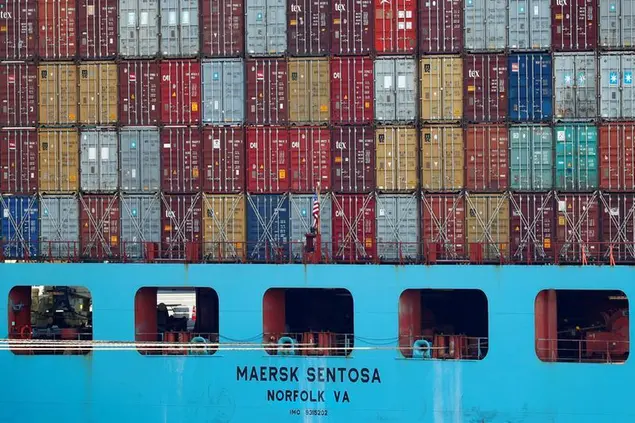PHOTO
The cost to ship a standard 40-foot container of toys, auto parts or other goods from Shanghai to New York has jumped to nearly $10,000, fueling frustration among importers and prompting some experts to say the market is in a bubble.
The Drewry World Container Index's spot rate for such a shipment hit $9,387 on July 11. That is more than double the rate from February but still below the peak of $16,000 early in the pandemic when it swelled due to spree buying by homebound consumers.
Industry experts attribute the bulk of the run-up in off-contract shipping prices to Yemen's Houthi rebels' missile and drone attacks that have forced ships to avoid the Suez Canal trade shortcut.
The alternative route around Africa takes longer, so fleets need more ships to move the same amount of cargo. This causes shortages, schedule disruptions and delays that drive up costs for sea transport that handles about 80% of international trade volume.
U.S. retailers and other shippers have responded by bringing in goods earlier. This quickly made rates much more expensive in the busy "peak" season for importing back-to-school, Halloween and Christmas merchandise.
"It is a bubble and it will eventually pop," Simon Heaney, senior manager for container research at Drewry, said of container rates.
Customers polled by the consultancy expect prices to fall in the first half of next year, Heaney said.
Meanwhile, the speed and magnitude of the increase has customers and industry experts asking whether market dynamics justify current rates. And some customers who remember the last round of inflation-driving ocean shipping costs worry that there are more increases ahead.
"There's never transparency about what's actually driving it, only assumptions. What's the rhyme or reason?" said Greg Davidson, CEO of Lalo, which sells stylish infant high chairs online and through Pottery Barn Kids stores.
Davidson said container shipping pricing is something of a black box and that large and small shippers in his professional network are bracing for rates of $20,000 per container.
That is partly due to concern that Republican presidential candidate Donald Trump could impose sweeping tariffs on imports if the former president wins the election in November, he said. Importers will often rush in goods before tariffs hit, causing shipping rates to soar.
The closely watched Shanghai Containerized Freight Index rate for Shanghai to the U.S. West Coast topped $8,100 this month to set a new record, even though sea cargo volumes remain below early pandemic highs.
Drewry's index had the rate on that trade lane at around 60% of its pandemic peak of $12,400 per container.
Large carriers like Maersk and Hapag-Lloyd have raised profit forecasts as robust demand and higher rates buoy their results.
"It is difficult to understand the magnitude and pace of the rate rises," Deutsche Bank Research analyst Andy Chu said in a client note.
For example, he said, May data on new orders from customers of manufacturing firms - which historically tracks with container demand - broke that trend.
A drop in demand could quickly deflate prices, Chu said.
"If demand is not sustained then rates could normalize quickly," he said.
(Reporting by Lisa Baertlein in Los Angeles; Editing by David Gregorio)
